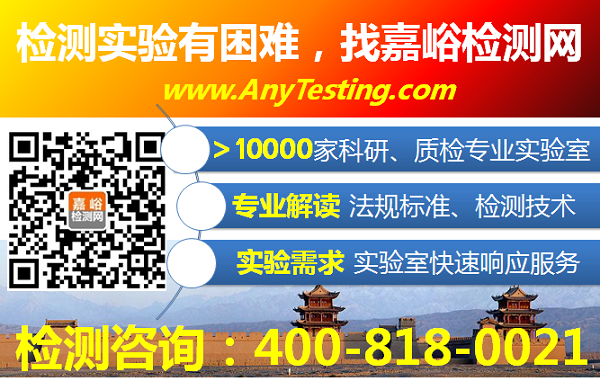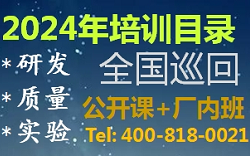您当前的位置:检测资讯 > 法规标准
嘉峪检测网 2025-07-28 19:27
欧盟为了统一使用通用充电接口USB Type-C, 继2022年12月7日在官方公报(OJ)正式发布并于2024年12月28日强制实施的关于通用充电器(Common Charger)修订指令(EU) 2022/2380之后,又发布新的通报――欧盟外置电源生态设计法规草案。
欧盟最新通报
2024年11月19日,欧盟委员会通过WTO发布G/TBT/N/EU/1095通报,发布欧盟委员会关于外部电源、无线充电器、无线充电垫、通用便携式电池充电器和USB Type-C电缆生态设计要求法规草案,将外部电源供应器(EPS)、一般用途手提电池的电池充电器、无线充电器、无线充电垫和USB Type-C电缆投放市场或投入使用纳入生态设计规定。通报原文如下:
NOTIFICATION
The following notification is being circulated in accordance with Article 10.6
|
1. |
Notifying Member: EUROPEAN UNION If applicable, name of local government involved (Article 3.2 and 7.2): |
|
2. |
Agency responsible: European Commission Name and address (including telephone and fax numbers, email and website addresses, if available) of agency or authority designated to handle comments regarding the notification shall be indicated if different from above: European Commission, EU-TBT Enquiry Point, Fax: +(32) 2 299 80 43, E-mail: grow-eu-tbt@ec.europa.eu Website: Preventing International Trade Barriers | TBT - European Commission |
|
3. |
Notified under Article 2.9.2 [X], 2.10.1 [ ], 5.6.2 [ ], 5.7.1 [ ], 3.2 [ ], 7.2 [ ], other: |
|
4. |
Products covered (HS or CCCN where applicable, otherwise national tariff heading. ICS numbers may be provided in addition, where applicable): external power supplies (EPS) |
|
5. |
Title, number of pages and language(s) of the notified document: draft Commission Regulation (EU) …/… laying down ecodesign requirements for external power supplies, wireless chargers, wireless charging pads, battery chargers for portable batteries of general use, and USB Type-C cables, pursuant to Directive 2009/125/EC of the European Parliament and of the Council, and repealing Commission Regulation (EC) 2019/1782; (12 page(s), in English), (17 page(s), in English) |
|
6. |
Description of content: The draft Commission Regulation contains ecodesign requirements for the placing on the market or putting into service of external power supplies (EPS), battery chargers for portable batteries of general use, wireless chargers, wireless charging pads and USB Type-C cables. In particular, the following aspects are proposed:
extending the scope to include wireless chargers and battery chargers for portable batteries of general use as defined in Regulation (EU) 2023/1542 of the European Parliament and of the Council, in view of interoperability requirements;
introducing stand-by consumption limits for wireless chargers and wireless charging pads;
extending the scope to USB Type-C cables in order to limit their energy losses and inform consumers of the maximum power supported;
removing the restriction on the definition of EPS to those with an output power lower than 250 W, and those powering a limited list of products (Annex I in Regulation 2019/1782);
requiring an EU 'Common Charger' logo to be affixed to USB Type-C chargers to inform consumers about their interoperability;
requiring USB Type-C chargers to operate with detachable cables and be marked at each port with the power supported;
introducing a general requirement for EPS to be USB Type-C chargers to power a range of products not covered by the Radio Equipment Directive in order to maximise interoperability;
excluding certain EPS from the interoperability requirements (including EPS used in/with wet-use conditions, toys, high levels of electrostatic discharge, most power tools, audio equipment, peak-power requirement, etc.);
raising the minimum thresholds for energy efficiency;
introducing a threshold for a minimum efficiency at 10% load;
introducing an output power performance requirement
clarifying the test conditions (particularly for adaptive power supplies);
requiring USB Type-C and USB PD power supplies to be tested without a cable and introducing a unique cable correction factor in order to ensure a level playing field for interoperable EPS.
The draft regulation takes account of the comments received from members of the Ecodesign and Energy Labelling Consultation Forum (X03609) following its meeting on 24 November 2023. |
|
7. |
Objective and rationale, including the nature of urgent problems where applicable: Commission Regulation (EU) 2019/1782 established ecodesign requirements for external power supplies. Article 7 of the Regulation requires the Commission to review the Regulation in the light of technological progress. The Ecodesign and Energy Labelling Working Plan 2022-2024, which the Commission has drawn up in accordance with Article 16(1) of Directive 2009/125/EC, sets out the working priorities under the ecodesign and energy labelling framework for 2022-2024. The Working Plan identified the energy-related product groups as priorities for preparatory studies and, if necessary, adoption of implementing measures. That includes EPS; Protection of the environment |
|
8. |
Relevant documents: Commission Regulation (EU) 2019/1782 of 1 October 2019 laying down ecodesign requirements for external power supplies pursuant to Directive 2009/125/EC of the European Parliament and of the Council and repealing Commission Regulation (EC) No 278/2009. https://eur-lex.europa.eu/eli/reg/2019/1782/oj |
|
9. |
Proposed date of adoption: 3rd quarter 2025 Proposed date of entry into force: The 20th day following that of its publication in the Official Journal of the European Union. It shall apply from 3 years after its entry into force. |
|
10. |
Final date for comments: 60 days from notification |
|
11. |
Texts available from: National enquiry point [ ] or address, telephone and fax numbers and email and website addresses, if available, of other body: European Commission, EU-TBT Enquiry Point, Fax: + (32) 2 299 80 43, E-mail: grow-eu-tbt@ec.europa.eu The text is available on the EU-TBT Website : https://technical-barriers-trade.ec.europa.eu/en/home https://members.wto.org/crnattachments/2024/TBT/EEC/24_07871_00_e.pdf https://members.wto.org/crnattachments/2024/TBT/EEC/24_07871_01_e.pdf |
新法规变化关键点
1.考虑到互操作性要求,新法规草案的涵盖范围将扩大到欧洲议会和理事会发布的法规(EU) 2023/1542中定义的一般用途便携式电池的无线充电器和电池充电器。
2.引入了无线充电器及无线充电垫的待机耗电量限制。
3.两端都带USB Type-C接口的连接线需满足EN IEC 62368-1-3的要求。通过对USB Type-C连接线设定要求,限制能量损失并以标识告知消费者所支持的最大功率。
4.取消了对输出功率低于250W的产品和为有限产品清单供电的产品的外部电源定义的限制(第2019/1782号法规附件Ⅰ)。
5.要求在USB Type-C充电器上贴上欧盟“通用充电器”标签,以告知消费者产品的互操作性。
6.要求USB Type-C充电器使用可拆卸的连接线,并在每个端口上标明使用的电源。
7.引入对EPS的一般要求,大多数外部电源都需要使用USB Type-C接口,且USB Type-C接口应满足EN IEC 62680-1-3的要求,如果是USB-PD,则还应满足EN IEC 62680-1-2的要求。这将最大限度地提高充电电源的互操作性。。
8.将某些产品的EPS排除在互操作性要求之外,如在潮湿条件下使用的EPS、玩具、高水平静电放电器、音频设备、有峰值功率要求的产品等。
9.提高了能效最低标准,引入了10%负荷下的最低效率阈值,引入了输出功率性能要求,以及明确了测试条件(特别是自调节电源)。
10.要求USB Type-C和USB PD电源在没有电缆的情况下进行测试,并引入了独特的电缆校正系数,以确保可互操作EPS的公平竞争环境。
根据通报,新法规预计将于2025年第三季度起生效并提供三年的过渡期。
可以说,这是欧盟继通用充电指令之后又一个规范USB Type-C接口的法规。新法规的实施将进一步促进规范市场上USB Type-C相关产品的要求,使USB Type-C的要求不再仅仅是针对无线设备指令中的产品。

来源:沃特电子电器产品服务


